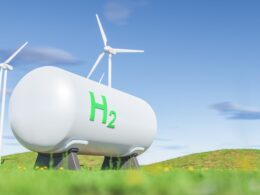Australia’s Safeguard Mechanism witnessed a record surrender of carbon credits during the 2023–24 compliance period, as demand surged under the reformed emissions reduction scheme. A total of 8.5 million carbon units were surrendered by facilities exceeding their emissions baselines, marking a dramatic increase in Australian Carbon Credit Unit (ACCU) usage, while less than a fifth of Safeguard Mechanism Credits (SMCs) issued were relinquished.
Introduced in 2016 and strengthened in 2023, the Safeguard Mechanism places emissions limits—known as baselines—on Australia’s largest industrial polluters. Facilities may surrender either ACCUs or SMCs to meet obligations if they emit above those thresholds. The reformed mechanism mandates a 4.9% annual decline in baselines, tightening emissions control over time.
According to data released by the Clean Energy Regulator, 142 facilities were liable for 9.2 million tonnes of CO₂-equivalent emissions during 2023–24. To meet compliance, entities surrendered 7.1 million ACCUs and 1.4 million SMCs. ACCUs accounted for 84.5% of all surrendered credits, representing a 479% year-on-year increase compared to the previous period.
Despite the issuance of approximately 8.3 million SMCs to 62 facilities, only 18.87% were used for compliance. Analysts interpret this as a holding pattern, with entities opting to bank SMCs amid expectations of reduced future issuance due to declining baselines.
“The significant early use of carbon credits is expected, as facilities weigh larger decarbonisation investments,” said John Connor, CEO of the Carbon Market Institute.
Michaela Morris, CEO of Tasman Environmental Markets, noted that SMCs are still finding their place in market strategies: “There have been a few small-scale swaps for HIR units, but it will take more time to gauge how SMCs are priced and used relative to ACCUs.”
Market pricing reflects these dynamics. On 15 April, Platts assessed generic ACCUs at A$33.75/tonne CO₂e, while SMCs were last heard trading on 21 March at A$31.25, maintaining a modest discount.
However, overall carbon market activity remains subdued, with traders citing uncertainty ahead of Australia’s federal elections on 3 May. The influx of SMCs earlier this year also contributed to a seven-month low in ACCU prices, according to Platts.
“Supply continues to outstrip demand in the secondary market,” observed Matt Pollard, net zero transformation analyst at Climate Energy Finance. “Unless there is a significant tightening of supply or steeper emissions intensity reductions, carbon credit prices will remain under pressure.”
In total, 219 facilities fell under the Safeguard Mechanism in 2023–24, with covered emissions falling 2.7 million tonnes year-on-year—from 138.7 million mtCO₂e in 2022–23 to 136.0 million mtCO₂e.





















